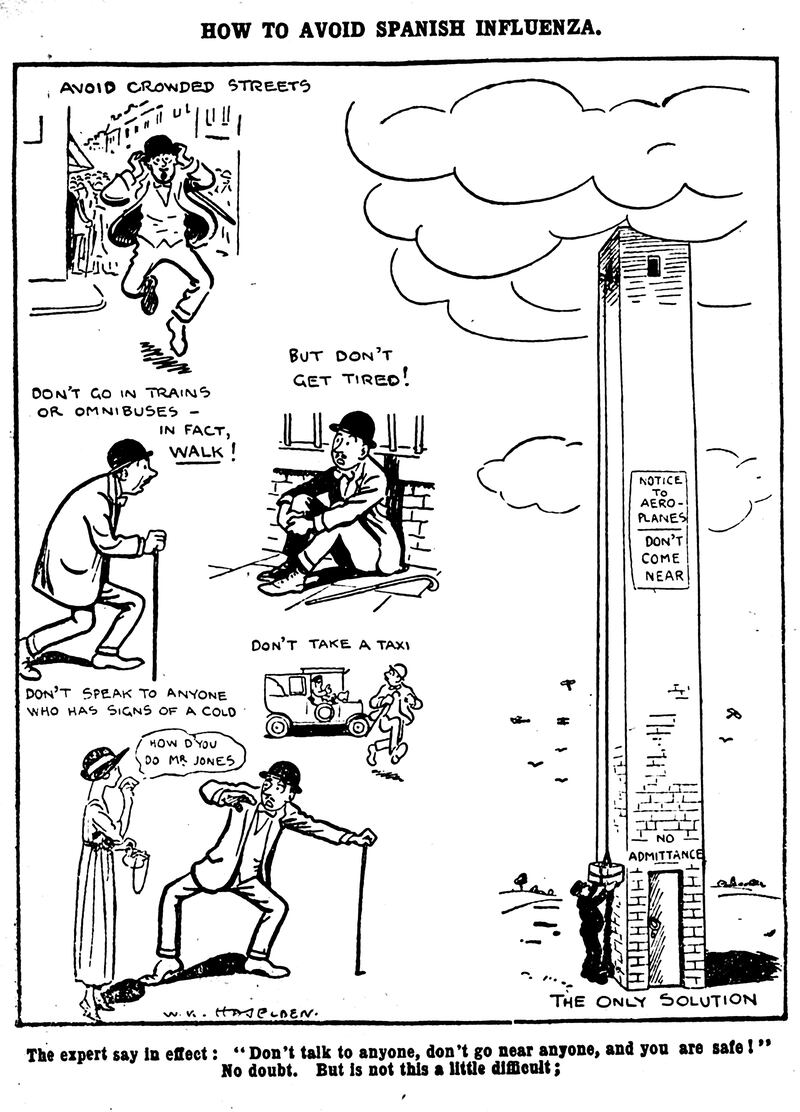This year marks the 100th anniversary of the great influenza pandemic of 1918. Between 50 million and 100 million people are thought to have died, representing 5 per cent of the world’s population. Half a billion people were infected.
In Ireland 20,057 deaths from flu were recorded. But this is likely to be a significant underestimate, according to Dr Ida Milne, Irish Research Council Marie Curie elevate fellow at Maynooth University.
"We think that a lot more people died because people were dying so fast that doctors just didn't have time to certify the deaths. They were much more concerned with treating the living than filling out pieces of paper for death certificates," she told RTÉ news.
Thought to be a bacterial infection at the time, the flu’s massive impact on life coincided with the horrors of the first World War. In fact it killed only slightly fewer Irish people than the four years of the Great War, in which an officially recorded total of 27,405 Irishmen lost their lives.
The virus had a predilection for taking the lives of otherwise healthy young adults, as opposed to children and older people, who usually suffer most from annual flu outbreaks.
A number of myths have sprung up in the 100 years since the peak of the 1918 pandemic. One is that the pandemic originated in Spain, leading to its other common moniker, the Spanish flu.
This came about as a result of military censorship: the countries involved in the war were keen to avoid encouraging their enemies with stories of otherwise fit young men being killed in large numbers; reports of the extent of the flu were suppressed in Germany, Austria, France, Britain and the US.
Geographic origin
However, neutral Spain had no need to keep the flu under wraps, thereby creating the false impression that it was the source of the disease.
Interestingly, the geographic origin of the 1918 flu is still uncertain, with Chanxi province in China, Kansas in the US, and sites in the UK and France all in the frame. It has been identified as a form of H1N1 influenza, which still circulates today. (H1N1 caused small numbers of flu cases this winter season).
Why did the 1918 flu pandemic kill so many people?
Crowding in military camps and urban housing, along with poor nutrition and sanitation are the likely culprits. And in a pre-antibiotic era, the development of secondary bacterial pneumonia in already weakened lungs was a factor.

Because of the high number of deaths there is a presumption that the flu virus killed most people who were infected with it in 1918. In fact most people survived. Death rates among the infected generally did not exceed 20 per cent, which, of course, is still high compared with modern flu death rates.
One might reasonably suppose that such sudden and widespread disease would have captured media headlines. Yet health officials and police authorities feared public unrest and panic, and so the severity of the 1918 flu was underplayed.
Burials
In November 1918, The Irish Times reported the official view that the pandemic was beginning to decline, although figures for burials in Dublin cemeteries were still high: some 50 burials occurred in Glasnevin cemetery before noon on the day in question – this in a city population of about 315,000.
Treatments for influenza in 1918 were supportive rather than specific. Large doses of whiskey were popular, while in Limerick local historian Des Ryan writes: “Some of the remedial cures...included snuff, a pack of towels soaked in vinegar, soda and sugar in a glass of hot milk, a strong dose of whiskey and ginger.”
Are there lessons from 1918 that are relevant to future influenza pandemics? Hand-washing, hygiene, and the need to isolate large numbers of ill patients remain key elements. We have antibiotics to tackle secondary pneumonias now.
But the holy grail of an effective multi-annual flu vaccine remains elusive.













